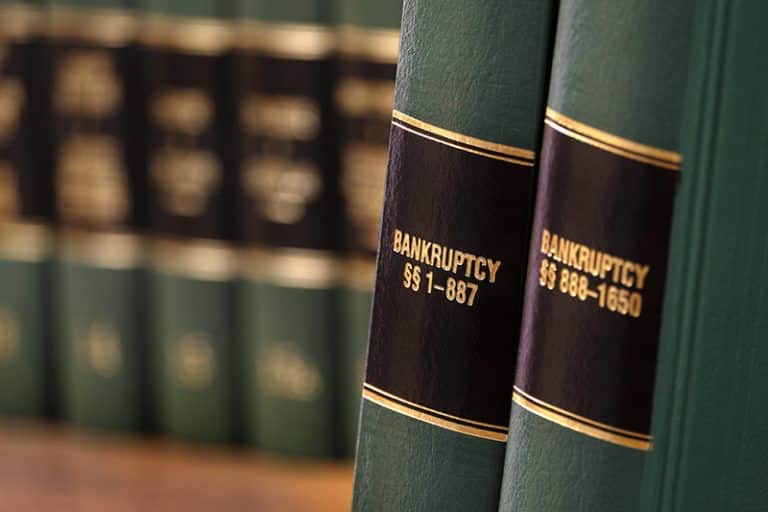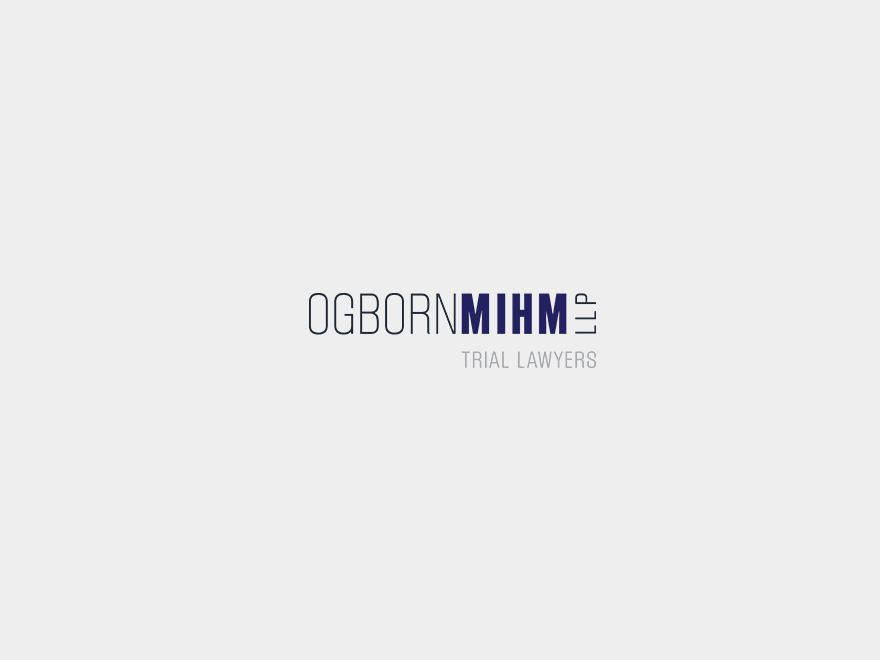Although a bankruptcy filing may be a strategic move for some companies and individuals, it often means that something has gone terribly wrong. Hard times have forced a bankruptcy filing to avoid foreclosure, to stop a lawsuit, or to discharge crushing medical bills.
What happens when the bankruptcy filing itself goes wrong?
In this post, we examine who can assert the malpractice claim against the lawyer who filed the bankruptcy case: the debtor or the debtor’s bankruptcy trustee. Stated differently, to whom does that malpractice claim belong?
Let’s start with some basics:
Bankruptcy 101
The filing of a bankruptcy case creates a “bankruptcy estate.” With a few exceptions, the bankruptcy estate contains “all legal or equitable interests of the debtor in property as of the commencement of the case.”[1] Federal bankruptcy law governs what property falls within the bankruptcy estate, but “[p]roperty interests are created and defined by state law.”[2]
Legal malpractice 101
In Colorado, “[t]o succeed on a legal malpractice claim founded in negligence, the plaintiff must establish that: (1) the attorney owed a duty of care to the plaintiff; (2) the attorney breached that duty; and (3) the attorney’s breach proximately caused damage to the plaintiff.”[3]
Although the elements of a legal malpractice claim are simply stated, the question of when the claim accrues is not always so simple. And when the claim against a bankruptcy lawyer accrues has particular relevance to whether the claim is property of the bankruptcy estate under the bankruptcy trustee’s control, and available to pay creditor claims, or whether the claim belongs to the debtor, unaffected by the bankruptcy.
By Colorado statute, a cause of action accrues “on the date both the injury and its cause are known or should have been known by the exercise of reasonable diligence.” § 13-80-108(1), C.R.S. An action for legal malpractice accrues when the plaintiff learns facts “’that would put a reasonable person on notice of the general nature of the damages and that the damage was caused by the conduct of an attorney.’”[4] Thus, notice of harm caused by a lawyer is an essential element of determining the accrual of a malpractice claim in Colorado. Additionally, “[f]or a legal malpractice claim to accrue, the client must have incurred some injury or loss, but the client need not have incurred all of the damages he or she claims.”[5]
Bankruptcy meets legal malpractice – The Perfect Storm?
When one or a series of bad events leads to a bankruptcy filing, the last thing a debtor needs is another hit. But bankruptcy filing can be tricky and involves thoughtful consideration of a host of factors. For example, if an individual owes back taxes, the timing of the bankruptcy filing may determine whether those taxes get discharged or remain payable after the bankruptcy. If a debtor owns a homestead with valuable equity, will she be able to save it? Can a debtor with a personal injury or other legal claim keep any money received in settlement or after a judgment in his favor?
Bankruptcy filings present lots of opportunities for error. The case law is rife with examples of bankruptcy filings gone wrong, including these:
- A debtor lost most of her $562,000 homestead interest because her bankruptcy lawyer failed to tell her that she should wait another 16 months before filing to claim her entire interest as exempt.[6]
- The bankruptcy lawyer filed a chapter 7 liquidation case, rather than a chapter 11 reorganization case, resulting in the loss of all of the debtor’s non-exempt assets to the chapter 7 bankruptcy trustee.[7]
- The debtors did not receive a discharge in bankruptcy to eliminate their debts because the lawyer failed to list assets on the bankruptcy schedules.[8]
Not surprisingly, both the injured debtor and the bankruptcy trustee may clash over who owns the claim against the debtor’s bankruptcy lawyer. For the bankruptcy trustee, the malpractice claim can bring dollars into the estate to distribute to creditors. For the debtor who has suffered the loss of assets or been denied a discharge, the damage is personal, and the right to recover for the damage can help rectify the personal harm suffered.
So whose claim is it?
To answer to that question, courts look to state law. Although the Bankruptcy Code is a federal law, it incorporates state law on numerous issues, including the law of professional negligence. If a debtor has a malpractice claim, the bankruptcy court looks to state law to decide when that claim arose and – importantly – whether it belongs to the bankruptcy estate or to the debtor.
Typically, if the malpractice claim accrues before the bankruptcy filing, the claim becomes property of the bankruptcy estate. If the claim accrues after a bankruptcy filing, it usually belongs to the debtor and not to the estate.[9]
Whether based on bad pre-filing advice, or harm that manifests later in the bankruptcy case, a malpractice claim arising in conjunction with the filing of a bankruptcy case can be viewed as causing legal harm at the precise moment of the bankruptcy filing, not before or after. In Alvarez, supra, the debtor claimed ownership of a malpractice claim against his lawyers who filed a chapter 7 liquidation case rather than the requested chapter 11 reorganization case. Citing Florida law, the debtor argued that the malpractice claim accrued after the bankruptcy filing when the chapter 7 trustee sold his assets and he suffered harm. The Eleventh Circuit Court of Appeals disagreed, noting that Bankruptcy Code section 541 defines property of the estate as property belonging to the debtor “as of” the bankruptcy filing, not before or after the filing.[10] The court reasoned that Alvarez “had a legally cognizable interest in this legal malpractice claim at the precise moment his chapter 7 case was filed” because the loss of control and assets constituted a significant and tangible change that obviously caused harm to Alvarez.”[11] Because the malpractice cause of action arose simultaneously with the bankruptcy filing, the malpractice claim became property of the chapter 7 bankruptcy estate available to pay creditors.
In Bruess, supra, the bankruptcy lawyer erroneously informed his client before filing that she could protect her entire homestead interest even though she had acquired the homestead within 1215 days of the chapter 7 bankruptcy filing – a mistake that cost the debtor more than $400,000. The bankruptcy court rejected the debtor’s argument that the malpractice claim accrued after the bankruptcy filing when the trustee objected to her homestead exemption, holding that, under Minnesota law, a malpractice action accrues when the client suffers “some damage” even if the client has not discovered the damage until later. On appeal, the district court agreed that the malpractice claim belonged to the chapter 7 trustee because the debtor “suffered some damage at the moment she petitioned for bankruptcy.”[12]
We are unaware of any reported Colorado bankruptcy case that has addressed this issue of whether a malpractice claim arising from a lawyer’s negligence in filing a bankruptcy case is viewed as accruing “at the precise moment” of the filing – and therefore becomes property of the estate – or before or after. A critical part of that analysis must be the “discovery” element of Colorado’s accrual statute – a distinguishing feature from many other state laws that do not provide that the accrual of the claim depends on when the claimant discovers or should have discovered the injury and its cause.
A recent Sixth Circuit could be instructive, however, on how to interpret when a claim against a filing bankruptcy lawyer accrues under Colorado law. In Blasingame, supra, the Sixth Circuit applied Tennessee law which, like Colorado’s, provides that a malpractice claim accrues when the claimant discovered or should have discovered the resulting injury. There, the individual debtors lost their discharge based on their failure to schedule millions of dollars of assets held in affiliated businesses and trusts. The court noted that, under Tennessee law, accrual requires that a client knew or should have known of the injury and that the Blasingames were unaware of their lawyer’s alleged malpractice until after their bankruptcy filing and the denial of their discharge. Accordingly, the debtors’ malpractice claims “were not a legal interest under Tennessee law such that they could be considered property of the bankruptcy estate under federal law.”[13]
Although the Blasingame court noted that Tennessee law governed when the claim accrues, it also emphasized that “federal law determines when a property interest becomes part of the bankruptcy estate.” The court considered whether the malpractice claim was “sufficiently rooted in the prebankruptcy past” to become property of the estate – regardless of when the claim accrued – citing the Supreme Court’s 1966 pre-Bankruptcy Code decision in Segal v. Rochelle.[14] The Blasingame court also noted the conflict among the circuits about whether the “rooted in the prebankruptcy past” concept survived the enactment of the Bankruptcy Code in 1978 and explained that the concept lives on in the Sixth Circuit, as well as in the Tenth Circuit.[15] Concluding that the Blasingames’ claims were not so rooted in the prebankruptcy past and “could not be more entangled with the Blasingames’ ability to make a fresh start,” the Court of Appeals affirmed the bankruptcy court’s holding that the malpractice claim was not property of the estate.[16]
The Takeaway
Unfortunately, lawyers make mistakes when planning and filing bankruptcy cases for their clients, and the case law is full of decisions about when the malpractice claim for those mistakes accrues and to whom it belongs.[17] Whether the malpractice claim accrues before, after, or “as of the commencement of the case” makes a world of difference in who owns the claim and who recovers for those mistakes.
Sources
[1] 11 U.S.C. § 541(a)(1) (emphasis added).
[2] Butner v. United States, 440 U.S. 48, 55 (1979).
[3] Brown v. Silvern, 45 P.3d 749, 751 (Colo. App. 2001), citing Bebo Constr. Co. v. Mattox & O’Brien, P.C., 990 P.2d 78 (Colo. 1999).
[4] Boulders at Escalante, LLC v. Otten Johnson Robinson Neff & Ragonetti, P.C., 2015 COA 85, ¶ 22, citing Morrison v. Goff, 91 P.3d 1050, 1053 (Colo. 2004).
[5] Lawyers’ Professional Liability in Colorado, 2016 Ed. (Michael T. Mihm ed., CLE in Colo., Inc.), p. 53-15, citing Jacobson v. Shine, 859 P.2d 911, 913 (Colo. App. 1993).
[6] Bruess v. Dietz (In re Bruess), No. 19-2714 (JRT), 2020 WL 3642324 (D. Minn. July 6, 2020).
[7] Johnson, Blakely, Pope, Bokor, Ruppel & Burns, P.A. v. Alvarez (In re Alvarez), 224 F.3d 1273 (11th Cir. 2000), cert. denied, 531 U.S. 1146 (2001).
[8] Church Joint Venture, LP v. Blasingame (In re Blasingame), 986 F.3d 633 (6th Cir. 2021).
[9] As noted below, the concept of whether a malpractice claim is “sufficiently rooted in the prebankruptcy past” may apply to cause even a claim accruing postpetition to belong to the bankruptcy estate.
[10] Alvarez, 224 F.3d at 1278.
[11] Id. at 1277 (emphasis added).
[12] Bruess, supra, at *1 (emphasis added).
[13] Blasingame, 986 F.3d at 641.
[14] Segal v. Rochelle, 382 U.S. 375, 380 (1966). In Segal, the Supreme Court considered whether a tax refund claim was “sufficiently rooted in the prebankruptcy past and so little entangled with the bankrupts’ ability to make an unencumbered fresh start that it should be regarded as ‘property’ under 70a (5)” of the Bankruptcy Act, which defined property that vested in the bankruptcy trustee upon filing.
[15] See Barowsky v. Serelson (In re Barowsky), 946 F.2d 1516, 1518-19 (10th Cir. 1991).
[16] Blasingame, 986 F.3d at 641.
[17] Examples of other decisions holding that the malpractice claim accrued “as of the commencement of the case” include Bounds v. Brown McCarroll, LLP (In re Bounds), 495 B.R. 725, 732 (W.D. Tex. 2013) (Texas law, “ill-conceived and self-serving plan to stall pending state court litigation”); Labgold v. Regenhardt, 573 B.R. 645 (E.D. Va. 2017) (Virginia law, filing within one year of property transfer); Helbling v. Josselson (In re Almasri), 378 B.R. 550 (Bankr. N.D. Ohio 2007)(Ohio law, failure to disclose assets).







